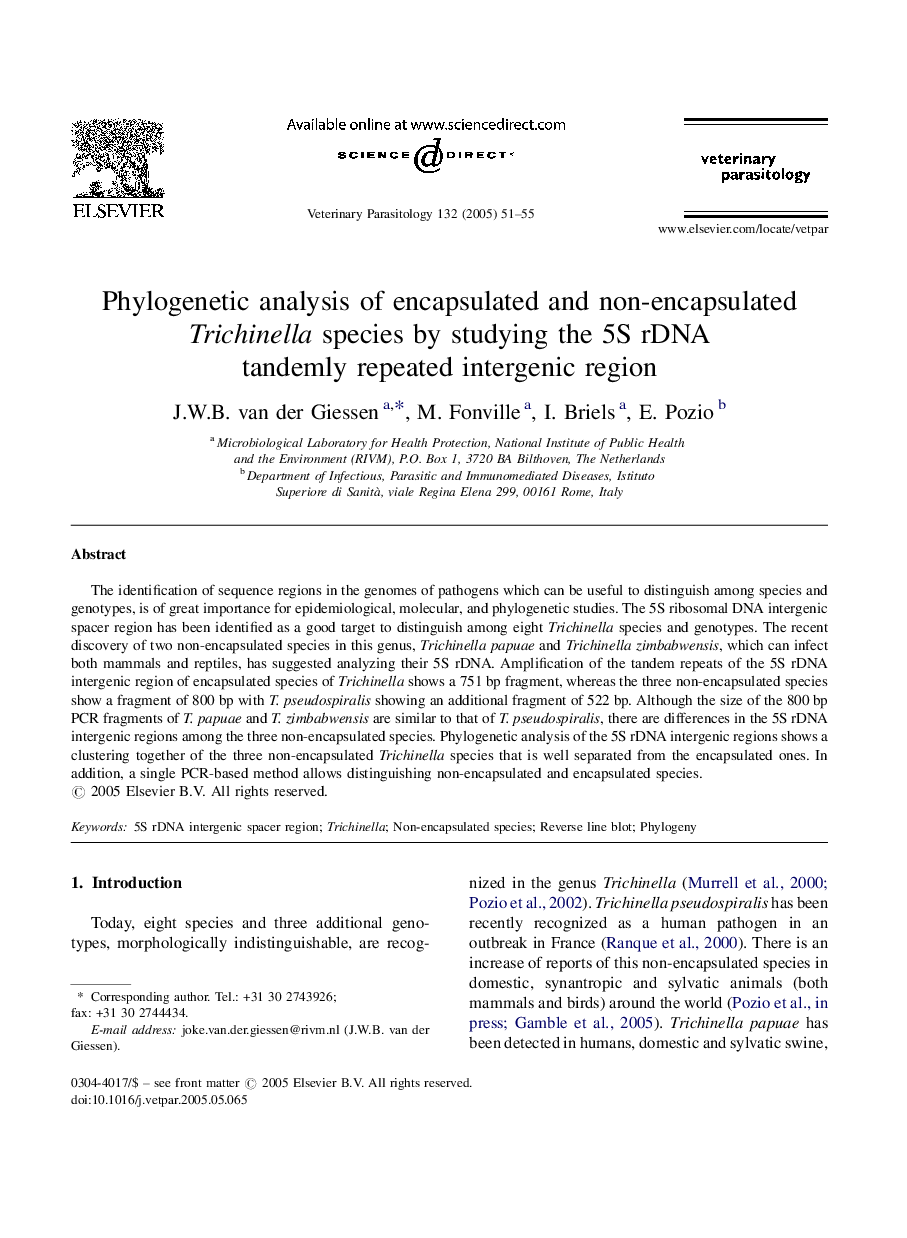| Article ID | Journal | Published Year | Pages | File Type |
|---|---|---|---|---|
| 8991016 | Veterinary Parasitology | 2005 | 5 Pages |
Abstract
The identification of sequence regions in the genomes of pathogens which can be useful to distinguish among species and genotypes, is of great importance for epidemiological, molecular, and phylogenetic studies. The 5S ribosomal DNA intergenic spacer region has been identified as a good target to distinguish among eight Trichinella species and genotypes. The recent discovery of two non-encapsulated species in this genus, Trichinella papuae and Trichinella zimbabwensis, which can infect both mammals and reptiles, has suggested analyzing their 5S rDNA. Amplification of the tandem repeats of the 5S rDNA intergenic region of encapsulated species of Trichinella shows a 751Â bp fragment, whereas the three non-encapsulated species show a fragment of 800Â bp with T. pseudospiralis showing an additional fragment of 522Â bp. Although the size of the 800Â bp PCR fragments of T. papuae and T. zimbabwensis are similar to that of T. pseudospiralis, there are differences in the 5S rDNA intergenic regions among the three non-encapsulated species. Phylogenetic analysis of the 5S rDNA intergenic regions shows a clustering together of the three non-encapsulated Trichinella species that is well separated from the encapsulated ones. In addition, a single PCR-based method allows distinguishing non-encapsulated and encapsulated species.
Related Topics
Life Sciences
Agricultural and Biological Sciences
Animal Science and Zoology
Authors
J.W.B. van der Giessen, M. Fonville, I. Briels, E. Pozio,
